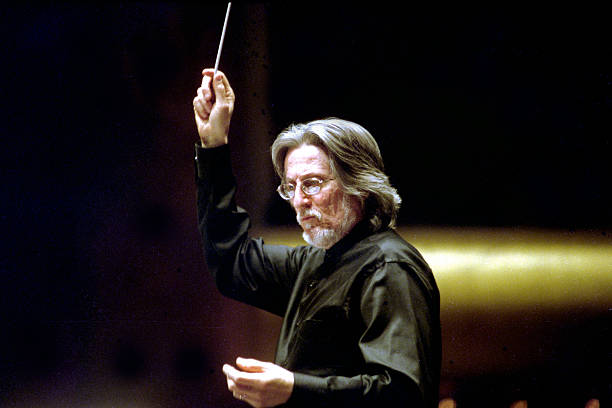Acquiring a Solid Conducting Technique with No Wasted Motion – From Harold Rosenbaum’s Book A Practical Guide to Choral Conducting
Comments Off on Acquiring a Solid Conducting Technique with No Wasted Motion – From Harold Rosenbaum’s Book A Practical Guide to Choral ConductingJuly 19, 2018 by Admin

Harold Rosenbaum’s book, A Practical Guide to Choral Conducting, has been released by Routledge (available at https://www.routledge.com/A-Practical-Guide-to-Choral-Conducting/Rosenbaum/p/book/9781138058446). The following is an excerpt discussing how to acquire a solid technique with no wasted motion.

 Perfect technique contains no wasted motion—no unnecessary or enlarged beats and no excessive hand, arm, and body movements. Some conductors erroneously believe that amateur or youthful singers will only see or respond to exaggerated motions, a notion which can do more harm than good, for a conductor employing them on a regular basis with his/her own choir will develop a technique that serves only that ensemble and therefore will be out of place, ineffective, and curious looking to other groups he/she might work with, and to singers who are now in your choir, but are in others as well. Other forms of wasted motion such as mouthing words, continually bending the knees, and conducting too high or too low only detract from the main conveyors of your message, your arms and hands. Furthermore, wasted motion from you will make it more difficult for your singers when they work with other conductors who utilize smaller, more concise, and more standard motions.
Perfect technique contains no wasted motion—no unnecessary or enlarged beats and no excessive hand, arm, and body movements. Some conductors erroneously believe that amateur or youthful singers will only see or respond to exaggerated motions, a notion which can do more harm than good, for a conductor employing them on a regular basis with his/her own choir will develop a technique that serves only that ensemble and therefore will be out of place, ineffective, and curious looking to other groups he/she might work with, and to singers who are now in your choir, but are in others as well. Other forms of wasted motion such as mouthing words, continually bending the knees, and conducting too high or too low only detract from the main conveyors of your message, your arms and hands. Furthermore, wasted motion from you will make it more difficult for your singers when they work with other conductors who utilize smaller, more concise, and more standard motions.
 Beauty, elegance, precision, clarity, energy, and expressiveness—these are the essential qualities and products of superior conducting, articulated with arms, hands, fingers, and facial expressions. Those conduits will feel most comfortable and free, and will capture your singers’ attention fully, when your entire body feels stable and balanced, and when you have good posture. To achieve this, your feet should be about a foot apart with the left foot slightly in front of the right. However, any variation that works for you is fine, provided you are standing upright with good posture. Once you have settled on your own comfortable stance, you are ready to begin practicing physical gestures.
Beauty, elegance, precision, clarity, energy, and expressiveness—these are the essential qualities and products of superior conducting, articulated with arms, hands, fingers, and facial expressions. Those conduits will feel most comfortable and free, and will capture your singers’ attention fully, when your entire body feels stable and balanced, and when you have good posture. To achieve this, your feet should be about a foot apart with the left foot slightly in front of the right. However, any variation that works for you is fine, provided you are standing upright with good posture. Once you have settled on your own comfortable stance, you are ready to begin practicing physical gestures.
More about A Practical Guide to Choral Conducting, including ordering information, at https://www.routledge.com/A-Practical-Guide-to-Choral-Conducting/Rosenbaum/p/book/9781138058446. Visit Harold at http://www.haroldrosenbaum.com/.
Category Sight, Sound, Word | Tags:
Comments Off on Acquiring a Solid Conducting Technique with No Wasted Motion – From Harold Rosenbaum’s Book A Practical Guide to Choral Conducting
Sorry, comments are closed.

